Make a one-time donation
I don’t charge for viewing this website or downloading the content, but it does cost me money to host it! If you find the content useful, please feel free to help out with the costs 🙂 No pressure though…….
Or enter a custom amount
Your contribution is appreciated.
DonateOver the years I’ve been recovering WW2 relics, I have built up a considerable knowledge of ordnance and kit. However, I am the first to admit I don’t know everything, (whoever says they do should be avoided!), and certain resources are available online to help identify items that I, and other collectors, are not familiar with.
The problem you face though is that there are few places with all the information on one page. Those that do have it on one page are usually just links to other sites so you end up with 40 pages open trying to identify one little relic!
So, in an attempt to make it easier for fellow collectors, I have collected some decent pictures and diagrams and put them together on this ONE page. I will try and do more in future posts, but to start off, a page about how to identify artillery shell cases, fuzes, primers and tubes.
ARTILLERY CARTRIDGE CASES
Lots of stampings and stencils can been found on artillery shell (cartridge) cases. the pics below I’ve left big so they can be easily read!







Fuzes
Fuzes also carry a large number of markings and can be quite confusing, with various manufacturers and dates stamped on them. They are relatively straightforward though….


Primers
Artillery shells carry a lot of charge in them, needed to propel a heavy projectile over many thousands of yards. Having a tiny percussion cap as the main source of ignition for this charge wouldn’t suffice, so the larger calibre shells, (everything from 40mm and above), usually have a primer. This is a separate charge to the percussion cap, but is designed to be initiated by the firing of the percussion cap, and hence set the main charge off in a uniform way. There are lots of different primers, and hopefully the one you’re trying to identify is here!
Don’t get caught out by the tubes on top of the primers. these were usually detachable so you can find the tubes on their own, or still attached to the primer. If it’s a brass tube with vent holes, it is almost certainly part of a primer.
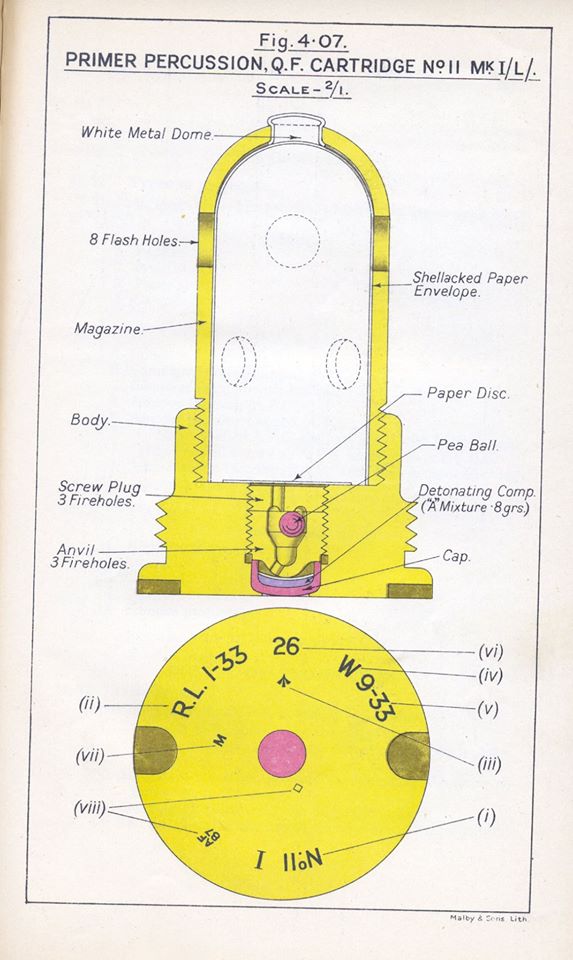


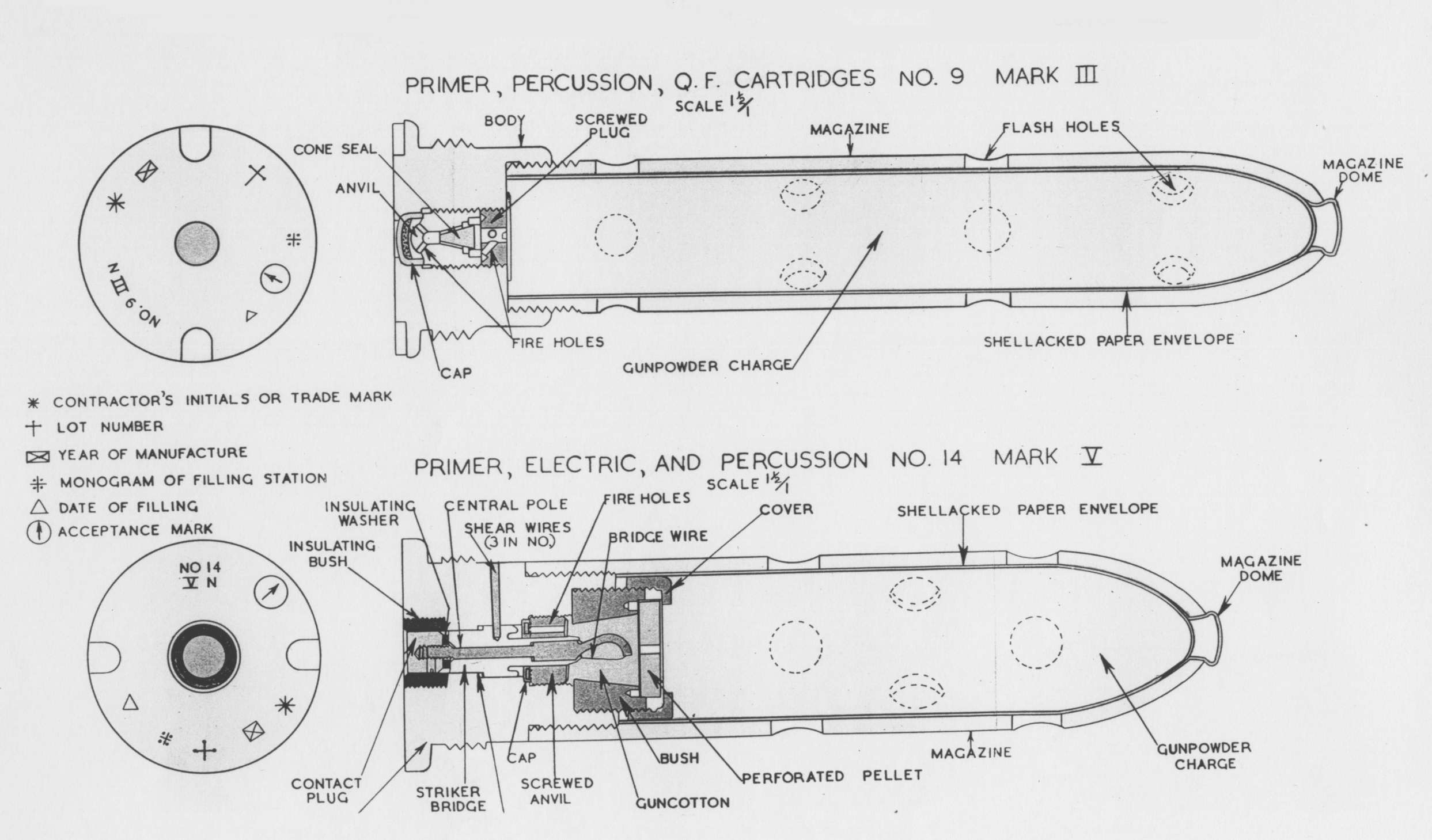


Here are a few examples of primers from my own collection…..




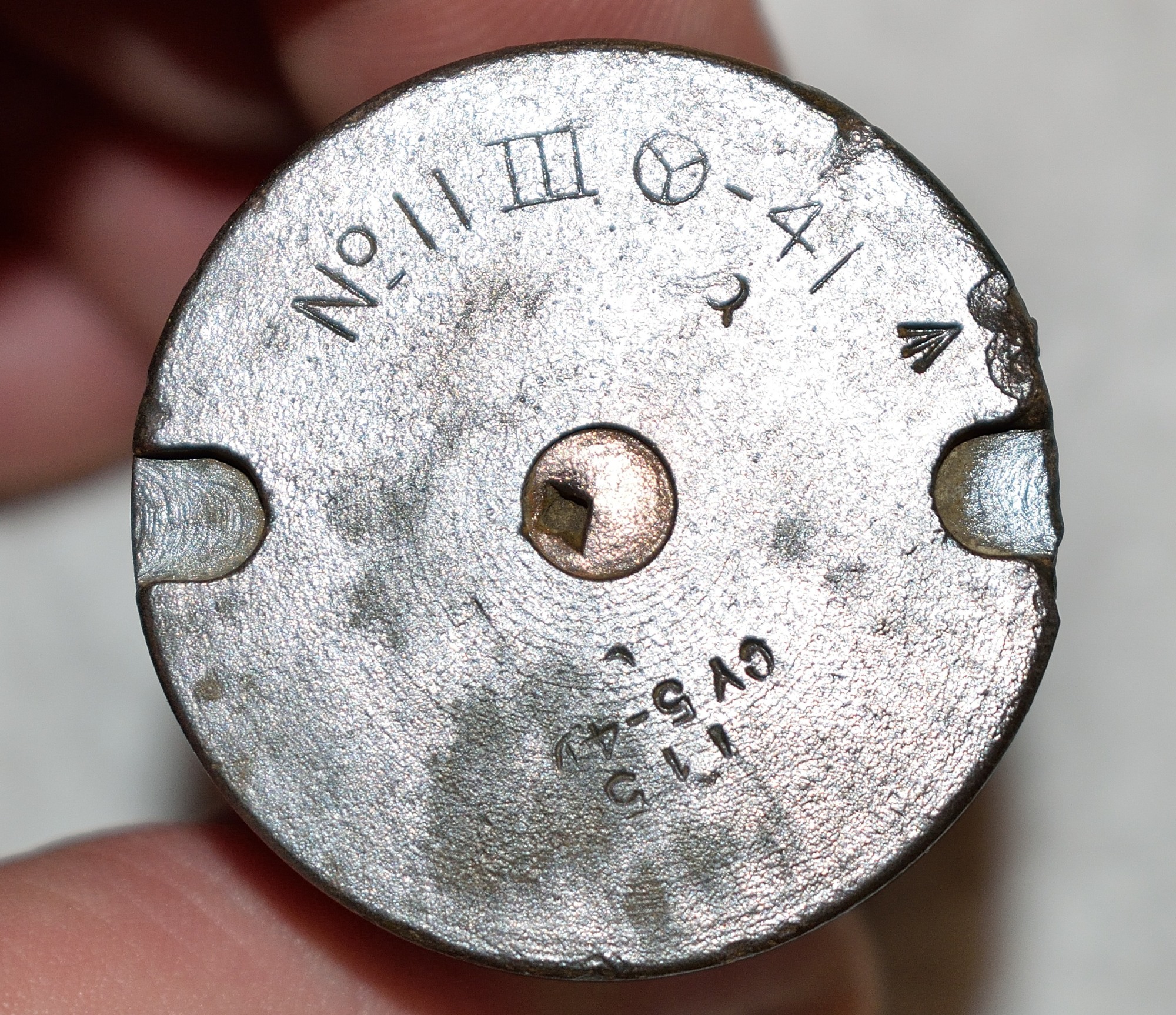

A few years back, I was very VERY lucky to come into the possession of some original WW2 era RAOC WW2 lecture notes. These belonged to an ex-serviceman who sadly passed away. During the clearance of his house, his daughters threw a big stack of papers away. Fortunately, his son spotted them in the skip and thought of me, (having no interest in ordnance himself). A week or so later I received the lecture notes and there was a big pile of them! They have helped me identify a number of items and I still love going through these notes, even though I must have read them hundreds of times. They cover everything from small arms ammo to the BIG artillery shells, explosives, detonators, grenades……and not only British. American and German too!
These were included in the pile….

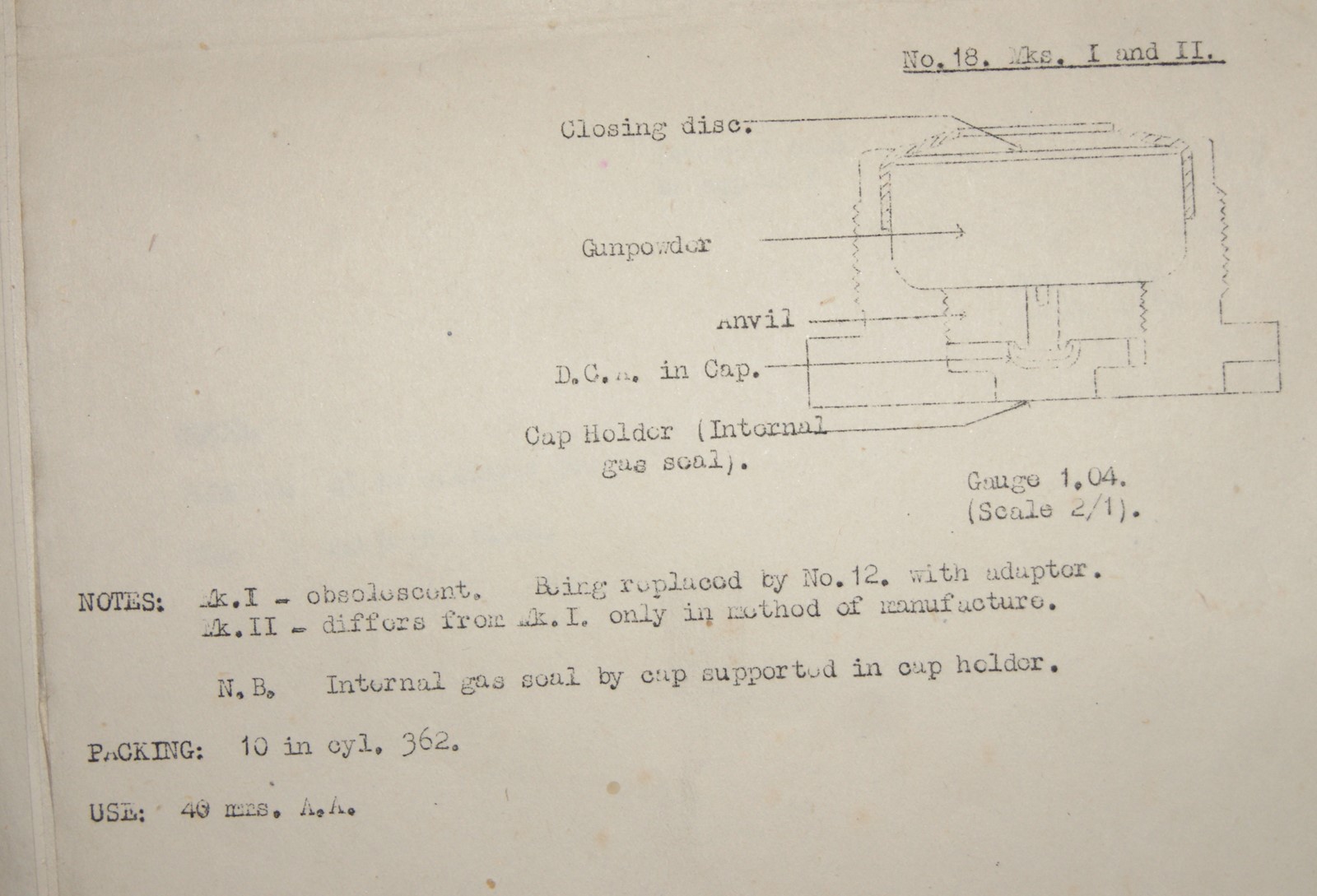









Vent tubes (often just called ‘tubes’)
Usually abbreviated to “V.S. tube” or just tube, this was the traditional, reliable British method of fully igniting powder charges in BL guns to fire projectiles, especially large shells. The tube was inserted through a vent in the breech. Early vents were “radial” i.e. at right-angles to the barrel length, bored through the top of the barrel into the chamber; later vents were “axial” through the centre of the breech mechanism and “mushroom” into the chamber. When the breech was closed, one of several methods was then used to trigger the tube, which then sent a powerful flash into the breech. The flash ignited a special “igniter” material in the end of the cartridge, and the igniter in turn ignited the main propellant charge. A powerful reliable flash from the tube was required because with bag charges, especially in the stress of combat or with variable howitzer charges, it could not be guaranteed that the igniter in the cartridge would be up close to the vent – it may have been pushed in too far, leaving a gap. The tube was designed to expand on ignition and seal the vent, preventing escape of gas.
These aren’t a common find, but you can still find them. Many people mistake them for ‘odd’ small arms cartridges. However, the flared base is a dead giveaway as to what they really are.


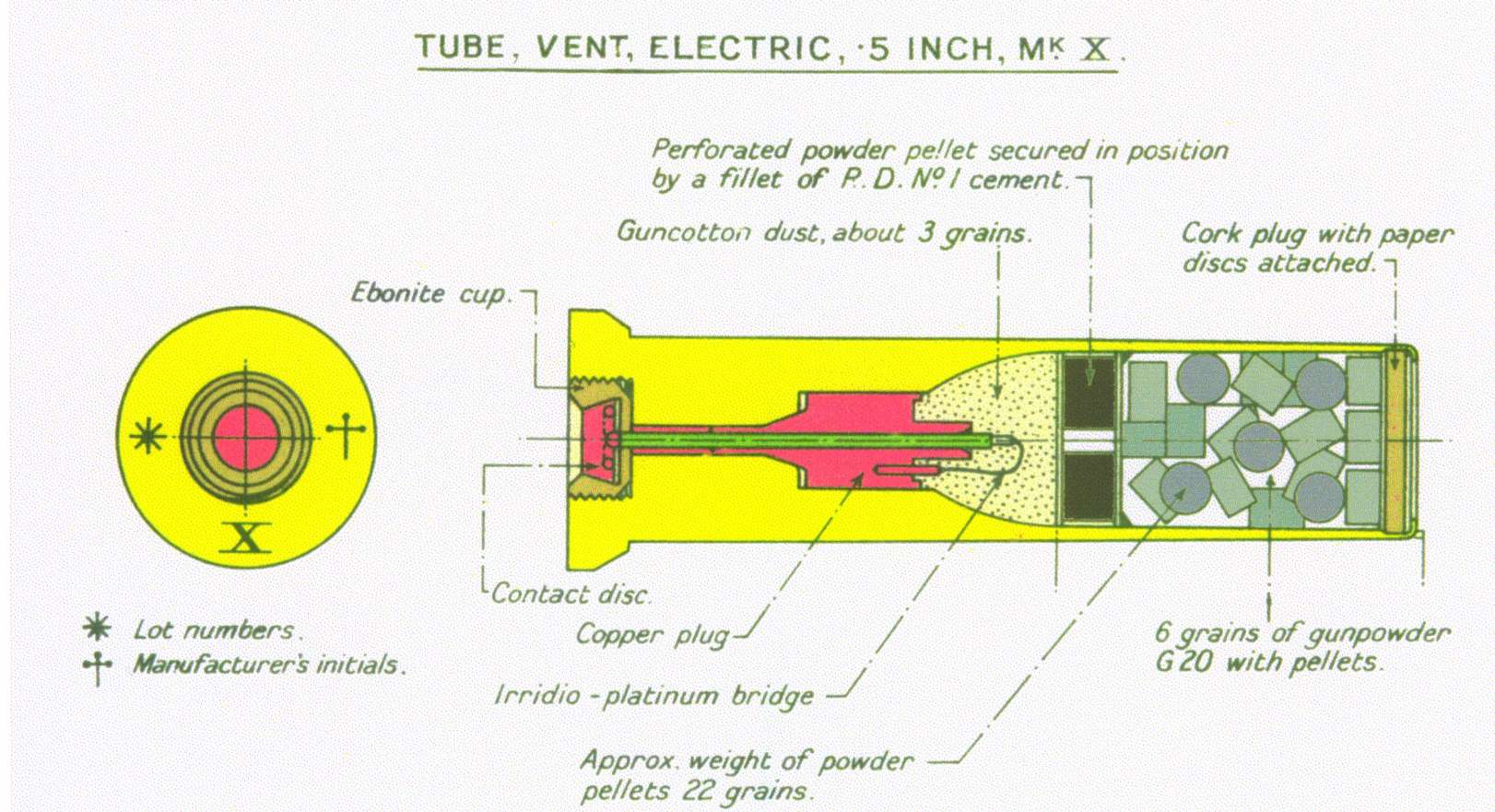

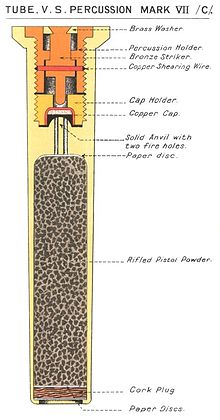

Here are a few vent tubes from my own collection.

Hope you find this lot useful! I’ll add more pics to it as and when I find them. 🙂
Hi Stephen, Brilliant information on the Artillery shells, loved it as I served in the Royal Artillery, I also notice on one of the pages that CY was one off the makers mark, which was made here in Chorley at The R.O.F were I live, regards, Paul.
LikeLike
Thanks Paul. Glad you found it useful 🙂
LikeLike
Hi Stephen…..fantastic! Have been collecting ww2 shells for just a couple of months and am loving the subject.Looking for a primer for a Belgium 47mm…please let me know if you come across one.All the best and thanks again!
LikeLike
Stephen, I have a similar No. 11 with the letters “No.11 III MSN” on the top. It was manufactured in 3/42. My question is what did the letters “MSN” represent?
LikeLike
Hello sir. I recently acquired a 1942 CGV 155mm M101 projectile. It is rusty and has no paint scheme or stenciling left. The fuze appears to be a wind screen not a fuze it doesnt resemble the detonator style fuses I see online. Are you willing to help me identify my round? It is also unfired as the driving band isnt grooved by rifling
LikeLike
Hi Tim. Please use the contact page to send an email and I’ll see if I can help.
LikeLike
I’m curious to know if in WW2 and WW1 for that matter Were live shells with activated contact tip-detonators pushed into the breech of artillery pieces? We see old footage of loaders piling shell after shell into breeches and rapid firing during a “stonk”
But seems like recipe for careless accidents/suicide if tip of live activated shell tip even touches rear face of breech before full insertion ?
LikeLike
All fuzes for artillery shells had to be fired down the barrel of the weapon for them to arm themselves. They were safe to put in the breech!
LikeLike
We use our old shells as occasional flower vases. Hope this won’t rust out the primers. A very interesting read, I’m intrigued at looking at the primers in more detail now.
LikeLike
Fantastic stuff Stephen thank you! I’ve been able to identify most of the info on the base of 4.5″ GUN VI cartridge case of my grandfathers (he was on 3.7″ QF AA Guns) but just strugging on manufacturers marks. I have R.L and C.Y on the primer, VAEL and QH on the base. Do you perhaps know whom these refer to please? Many thanks in advance
mark
LikeLike
Hi Mark, have just read your post re the abbreviations on your shell case. QH is the mark of ROF Queniborough which was a Filling Factory, VAEL is Vickers Armaments and Engineering Ltd, who would have made the case. The Mark’s on the Primer, CY is ROF Chorley Filling Factory, whilst RL indicates it was manufactured by the Royal Laboratory at Woolwich Arsenal. Hope this is of help. Regards, Fergus.
LikeLike
Thanks Fergus! much appreciated 🙂
LikeLike
Great information. I have my grandparents things. Trying to identify the cartridge with spring loaded lid. The base has ANS. Just wondering if anyone knows what this may have been used for?
LikeLike
Please use the Contact page to get in touch and I’ll do my best to help.
LikeLike
Stephen, I have a no 15 mk ii primer and tube in my possession. I am interested in learning more ab oh t this do you have any links I can use to research it?
LikeLike
Hi. There is a manual or two available to download with info about this primer on my site. Can’t remember what it’s called though so you will need to trawl through them!
LikeLike
Axtually, there is info about the No. 15 on this page! The scans of the lecture notes, one of them is a No 15
LikeLike
Hello, after removing sheetrock in our old house, we discovered wood cases of empty 75mm Howitzer shell tubes.
Do you know if they’re worth anything?
The tubes are in great condition but the cases are not.
LikeLike
Hello we have a shell from WW2 that still has it’s primer in it, it appears to have not been fired, there is no charge or projectile… we were wondering if this is still safe
LikeLike